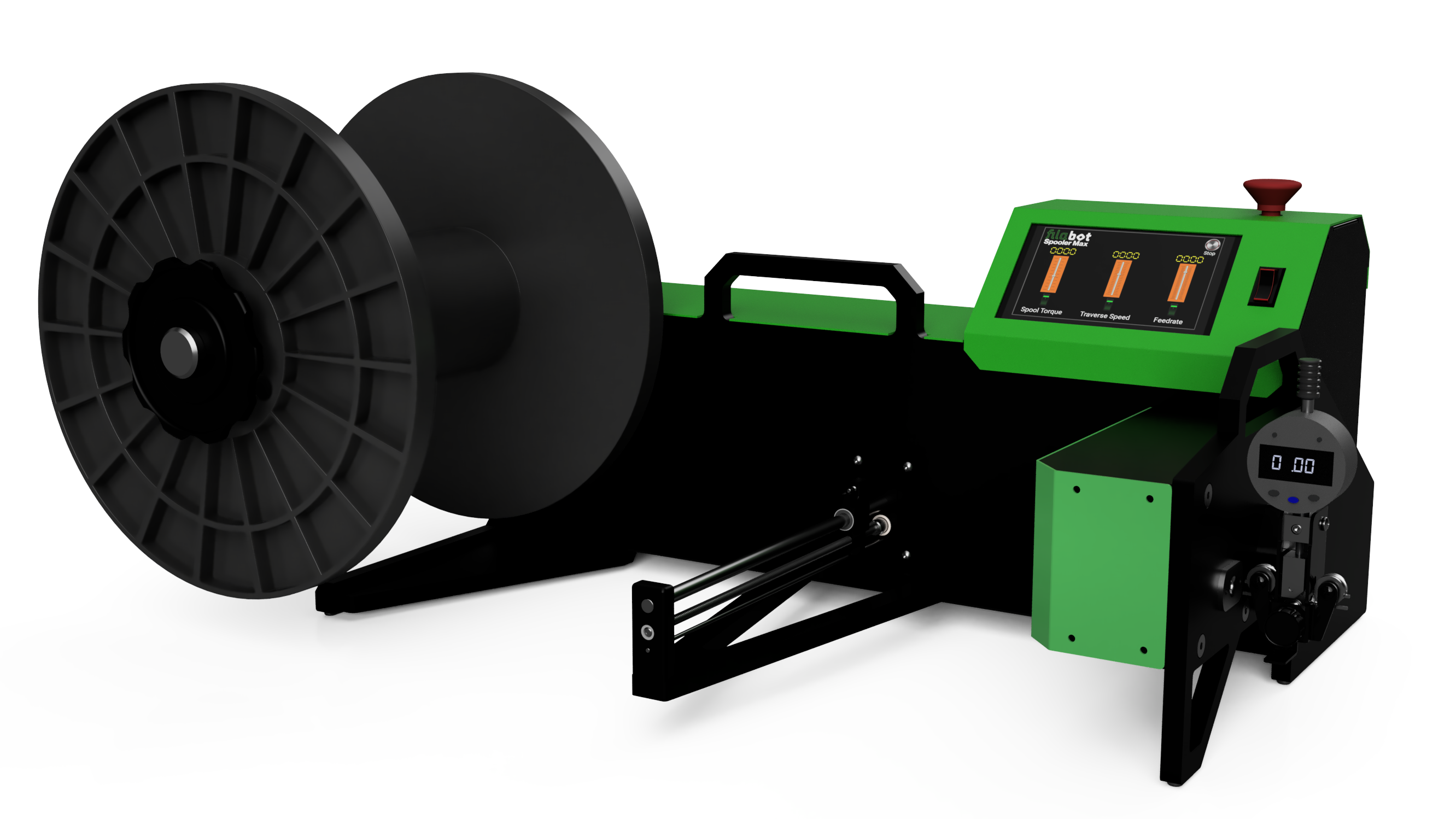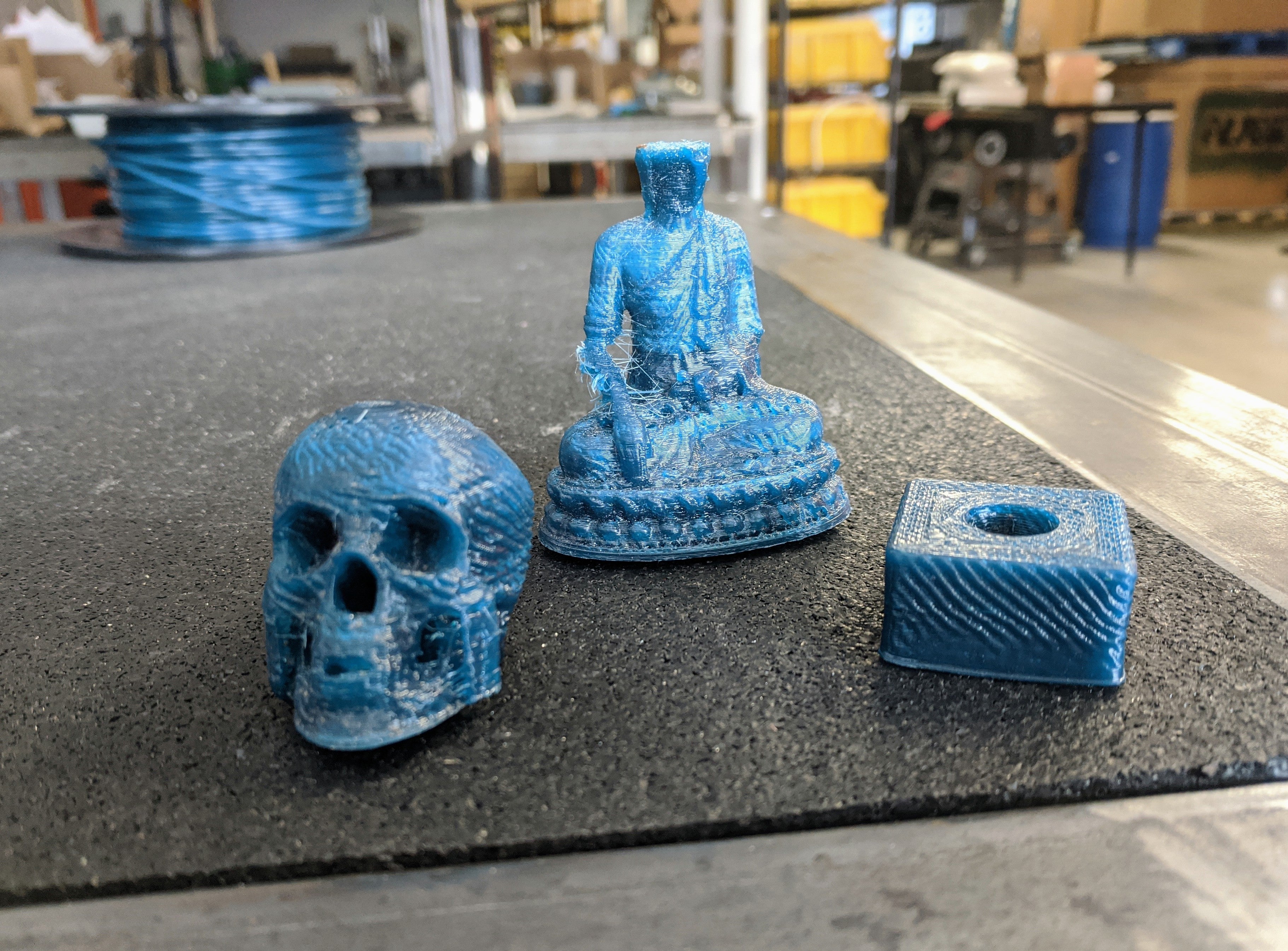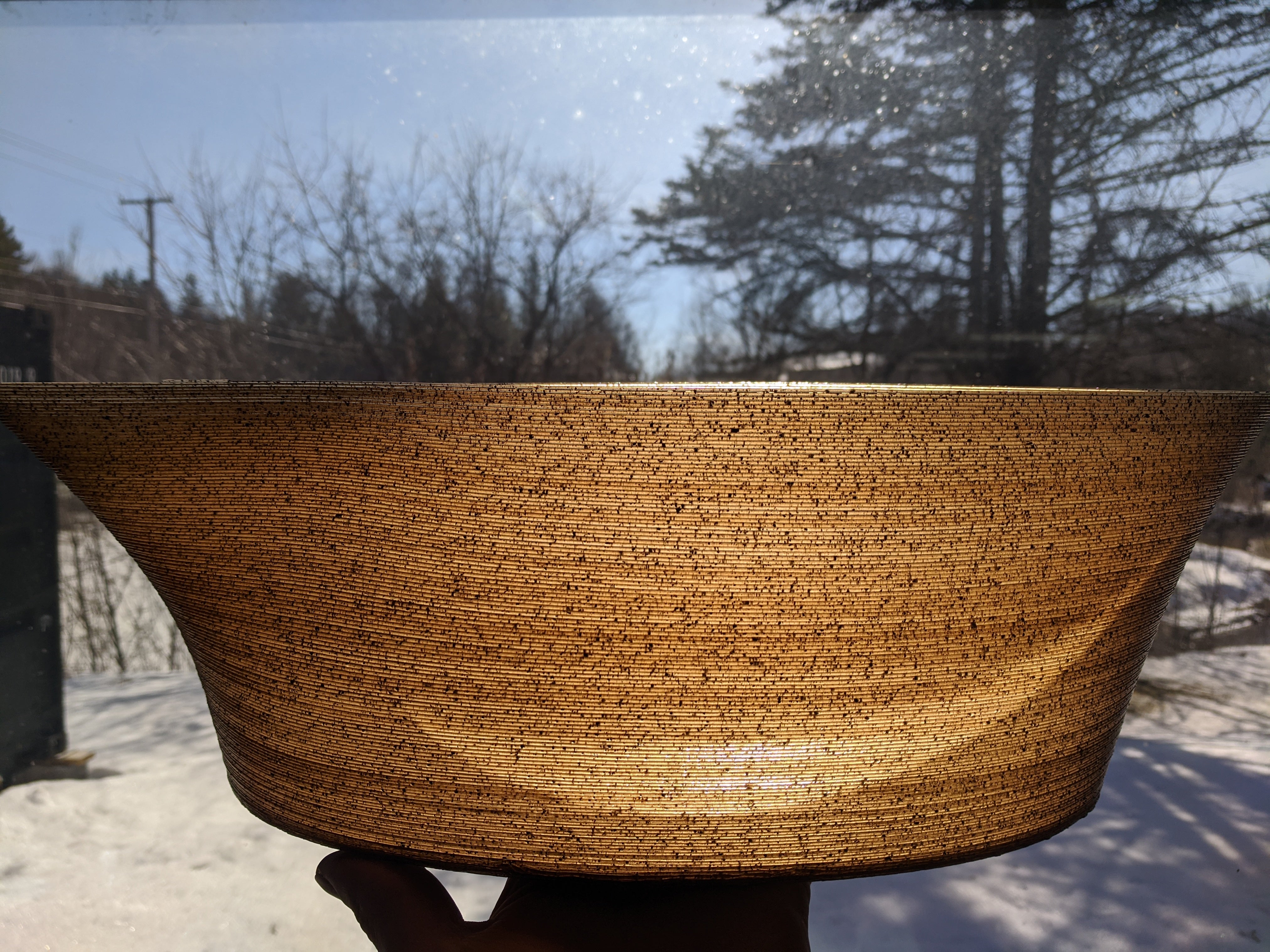Here is one for all you additive addicts out there! Wood and plastic are often placed conceptually as antithetical materials due to their contrasting qualities- endlessly variable vs.. homogeneous and consistent, natural vs.. synthetic\, traditional vs.. futuristic.... the list goes on.. In spite of this, the truth is that wood is commonly combined with different polymers as a fine dust to great effect! If you have never tried it, it is worth a try just for the smell alone- and we've got some extrusion test results that can help guide you along your way with some baseline settings for success.. Join the wood/plastic fusion revolution!
Test Technician: Nasser Abdel-Fatah
Test Number(s): ET200831NA01-Spool1 & Spool2
Plastic Name: Wood Fill PLA Pellets
MSDS: N/A Need to contact Manufacturer
Manufacturer: Push Plastics
Supplier: Push Plastics
Additives: Wood
Material Form: Pellets, light brown.
Extrusion Test Notes
Material preparation: None.
Grinding: None.
Drying: Yes, 4 hours 150C.
Extrusion Setup: EX6. Airpath (2X). Filameasure SPC Unit with Tablet, and Spooler.
Extrusion Results: The above test numbers were able to generate filament at 1.75mm with a tolerance of +0.05mm. The settings, speeds, and additions are in the correct range to generate filament. Further testing will need to look at any improvements when using a chrome screw. Also adjustments to the back and middle zone might help with consistency.
Test Settings:
Materials were extruded in the EX6 with the following settings:
Heat zone settings:
- Front: 168 degrees Celsius
- Middle: 173 degrees Celsius
- Back: 172 degrees Celsius
- Feed: 50 degrees Celsius
Fans Settings:
- Front: Mid
- Middle: Mid
- Feed: Mid
- Motor: Max
EX6 Power:
- D.C. Volts: 20
- D.C. Amperes: 1.5-2
Nozzle Used:
- Standard Nozzle Test number: ET200831NA01-Spool1/Spool2
- Size: 2.00mm
Screw Used:
- Standard Stock Screw Test number:ET200831NA01-Spool/Spool2
Airpath Settings:
- Number of Airpath’s: 2
- Fan Speed: 100% & 50%
- Magnets: 5 used along Airpath. End, Center, Front.
- Tape: No.
Spooler Settings (0.5kg spool):
- Drive: mid to slow
- Traverse: 40%
Notes on Equipment
The positioning of Equipment: When extruding the polymer space the EX6 50mm (2in) away from the first Airpath. Have no space between Airpath 1 and Airpath 2. And space the Spooler 30cm (1-foot) between Airpath 2 and the Spooler.
Results:

Graph 1. Test: ET200831NA01-Spool1. Stock Extrusion Testing Nozzle and Screw.

Graph 2. Test: ET200831NA01-Spool2. Stock Extrusion Testing Nozzle and Screw.
Below are some photos from the tests:
1. Filabot logos

2. Spooled Filament

3. Spooled Filament 2

4. Prints from the filament

Want to see more?
Send us an email at contact@filabot.com if you have any questions or would like to receive a folder with video samples from the test as well as screenshot and Excel data for the above tests.
Related Posts
Improve Filament Output Consistency with Melt Filter Nozzles
Use the Filabot Melt Filter Nozzle to help decontaminate your recycled materials for a clean, consistent filament. The stock nozzle is good for lower output applications where the voltage is under 25 volts.
The 2x nozzle performs better because it provides more laminar flow (less die stress at exit) and allows the filament to cool slightly during exit compared to stock. The 2x nozzle works up to 50 volts.
The 3x nozzle is used for very high index plastics like PET. It aids in the pull down on exit and allows the filament to cool even more than the 2x.
---------------------------------
FILAMEASURE Inline Filament Measurement and SPC Unit
Finally, the perfect way to measure filament while extruding. The Filabot Filameasure is the perfect addition to the Filabot Spooler, this addition mounts to the Filabot Spooler and measures freshly extruded filament.
The inline measurement allows for real time adjustments to dial in diameter for the best possible filament. No more need for consistent caliper checking with this tool. Another great feature of the Filameasure is the SPC Unit one can attach to it. With the Filalogger software one can record and save in real time filament spooled or polymers tested! This is upper handy for on the cuff adjustments and troubleshooting needs. The Filameasure and SPC unit will allow to compare and contrasts your data with other plastics and extruder settings to see what works best for you!
We feel very strongly about the value this addition can bring to you and your extrusion making! To help with the support of our product we have a couple YouTube videos you can check out here. Also, check out the Filameasure here on our website! Be on the lookout for new products to improve your recycling and extrusion needs!









